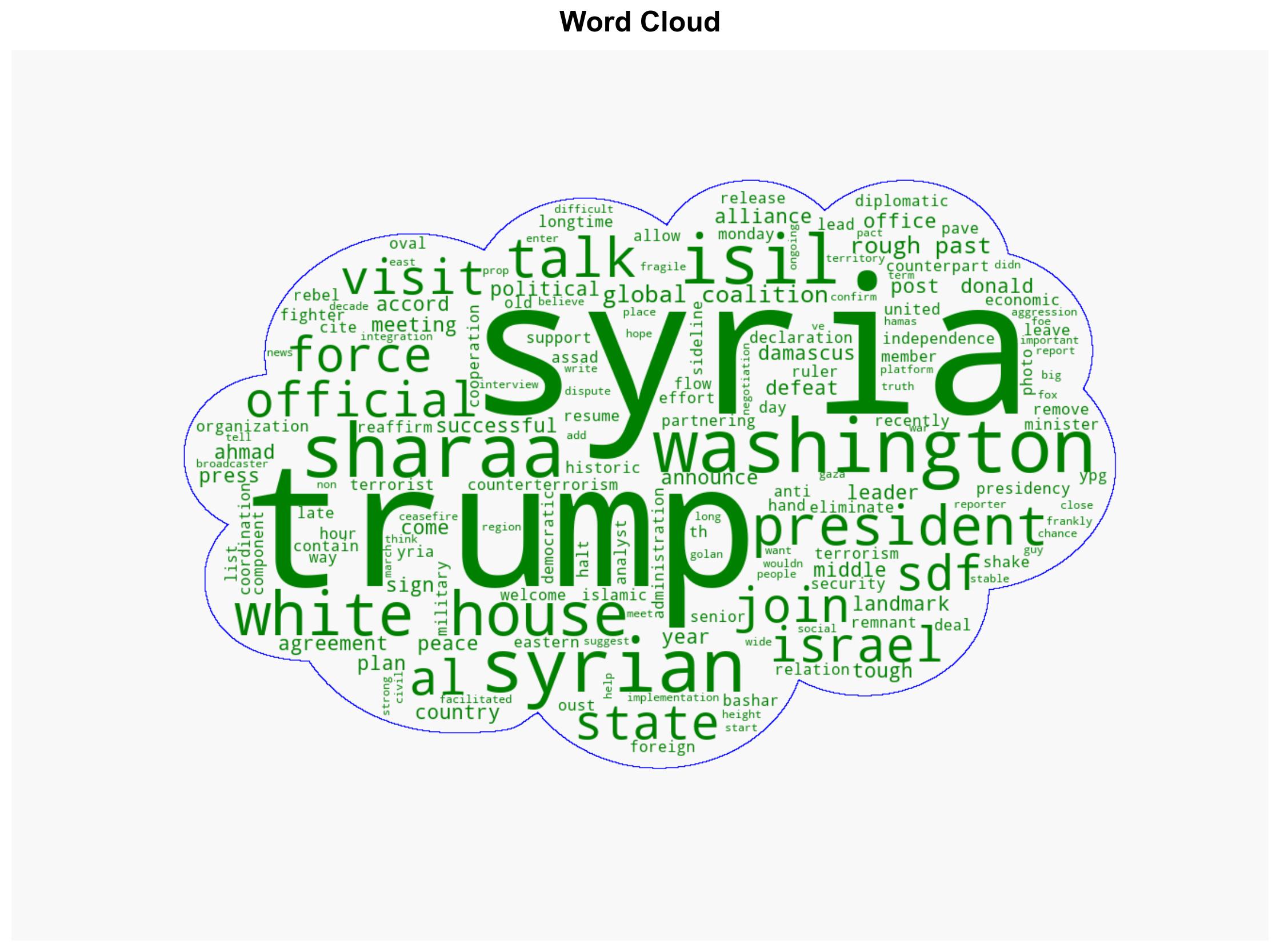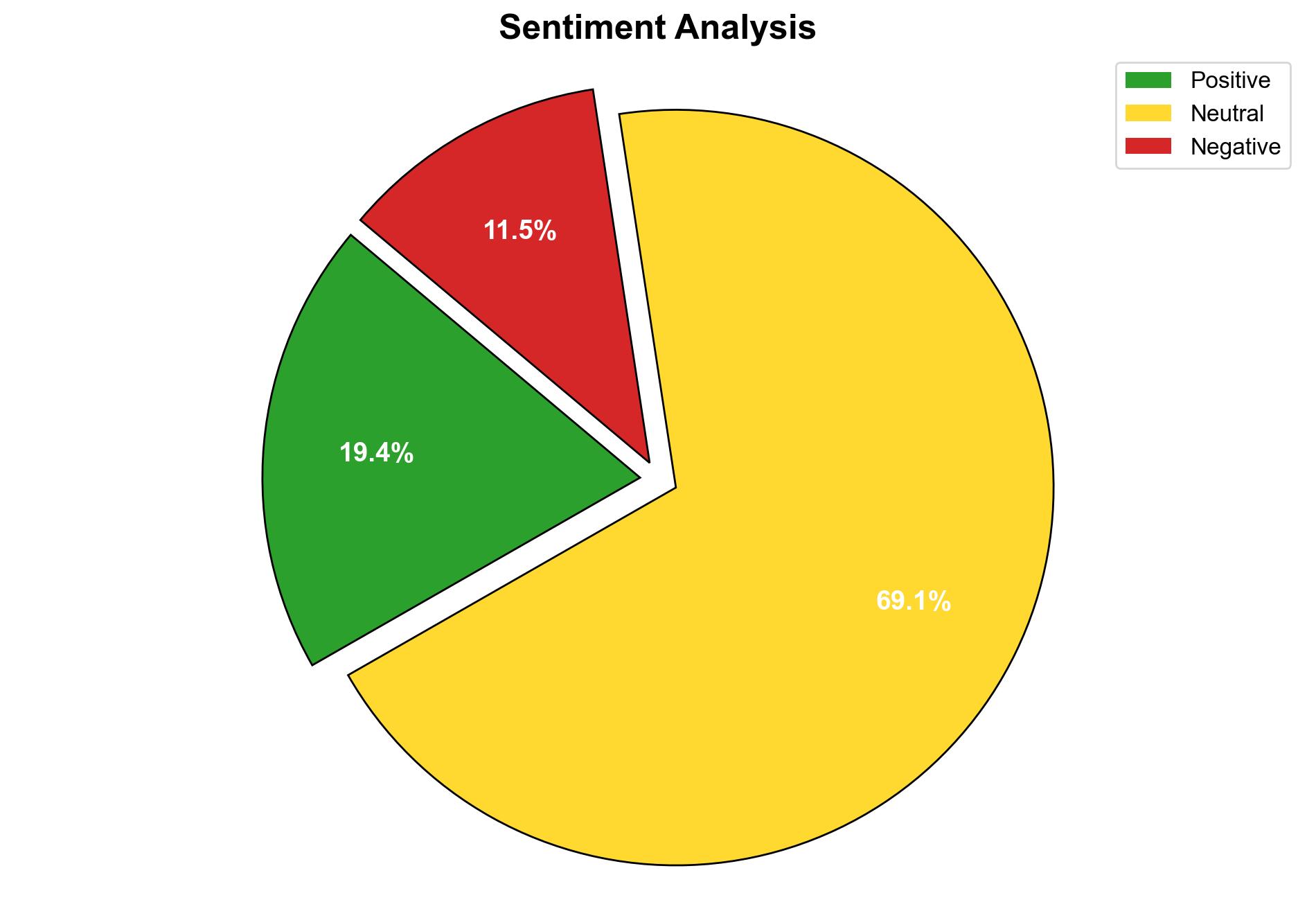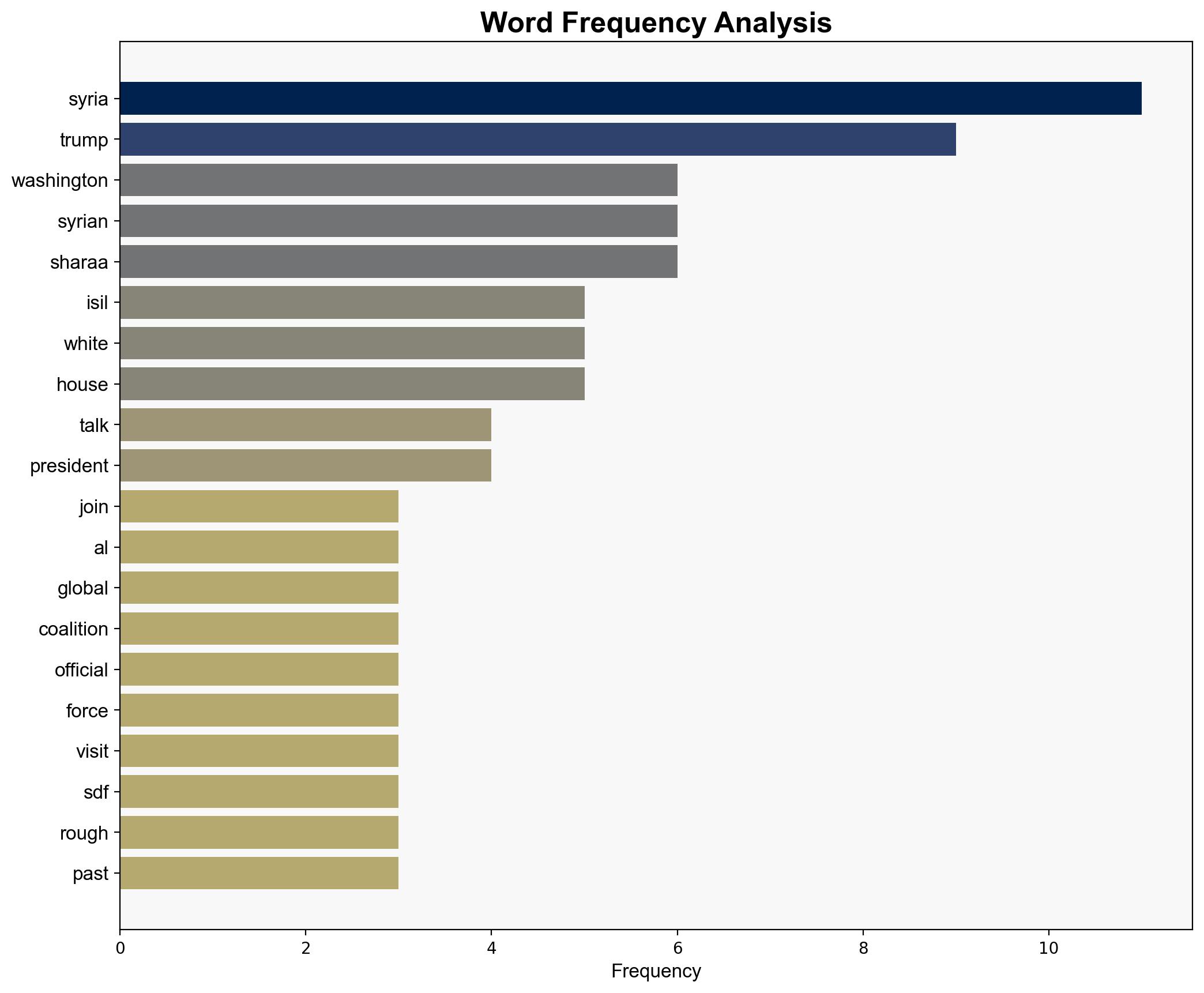Syria joins alliance against ISIL after White House talks – Hurriyet Daily News
Published on: 2025-11-11
AI-powered OSINT brief from verified open sources. Automated NLP signal extraction with human verification. See our Methodology and Why WorldWideWatchers.
Intelligence Report: Syria joins alliance against ISIL after White House talks – Hurriyet Daily News
1. BLUF (Bottom Line Up Front)
With a moderate confidence level, the most supported hypothesis is that Syria’s joining of the anti-ISIL alliance is primarily a strategic move to regain international legitimacy and economic benefits, rather than a genuine commitment to counterterrorism. It is recommended that the U.S. maintain cautious engagement, ensuring Syria’s compliance with alliance objectives while preparing for potential shifts in regional dynamics.
2. Competing Hypotheses
Hypothesis 1: Syria’s decision to join the anti-ISIL alliance is a strategic maneuver to restore diplomatic relations and economic ties with the West, particularly the U.S., while leveraging the alliance to consolidate power domestically.
Hypothesis 2: Syria’s participation in the alliance is a genuine commitment to counterterrorism efforts, driven by a need to stabilize the region and eliminate ISIL threats within its borders.
Hypothesis 1 is more likely due to Syria’s historical patterns of leveraging international alliances for domestic power consolidation and economic gain, as well as the recent removal from the terrorism list, which suggests a diplomatic strategy rather than a counterterrorism focus.
3. Key Assumptions and Red Flags
Assumptions include the belief that Syria’s leadership is willing to cooperate fully with the alliance’s objectives and that the U.S. can effectively monitor Syria’s compliance. Red flags include the rapid diplomatic shift and the potential for Syria to use the alliance as a cover for other geopolitical maneuvers. Deception indicators may involve Syria’s historical alliances and its complex relationship with regional actors like Iran and Russia.
4. Implications and Strategic Risks
The inclusion of Syria in the alliance could lead to shifts in regional power dynamics, potentially affecting U.S. relations with other Middle Eastern allies. There is a risk of Syria leveraging its position to sideline groups like the SDF, which could destabilize existing power balances. Additionally, the move might provoke reactions from countries with vested interests in Syria’s current political structure, such as Iran and Russia, leading to potential escalation in regional tensions.
5. Recommendations and Outlook
- Monitor Syria’s actions within the alliance closely to ensure compliance with counterterrorism objectives.
- Engage with regional allies to assess potential impacts on existing alliances and prepare contingency plans.
- Best-case scenario: Syria genuinely contributes to the alliance, leading to regional stabilization.
- Worst-case scenario: Syria uses the alliance to strengthen its regime and destabilize opposition groups, leading to increased regional tensions.
- Most-likely scenario: Syria partially cooperates with the alliance, balancing its commitments with domestic and regional interests.
6. Key Individuals and Entities
Ahmad al Sharaa, Donald Trump, Syrian Democratic Forces (SDF)
7. Thematic Tags
Regional Focus
Structured Analytic Techniques Applied
- Causal Layered Analysis (CLA): Analyze events across surface happenings, systems, worldviews, and myths.
- Cross-Impact Simulation: Model ripple effects across neighboring states, conflicts, or economic dependencies.
- Scenario Generation: Explore divergent futures under varying assumptions to identify plausible paths.
Explore more:
Regional Focus Briefs ·
Daily Summary ·
Methodology





